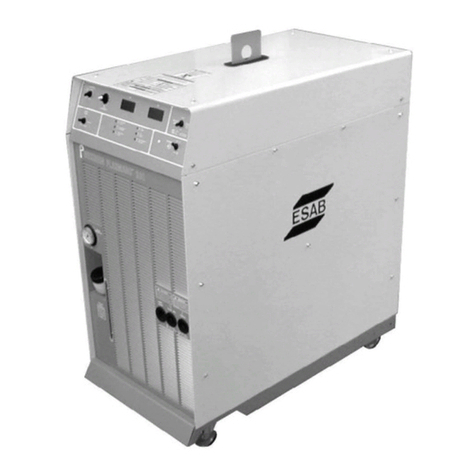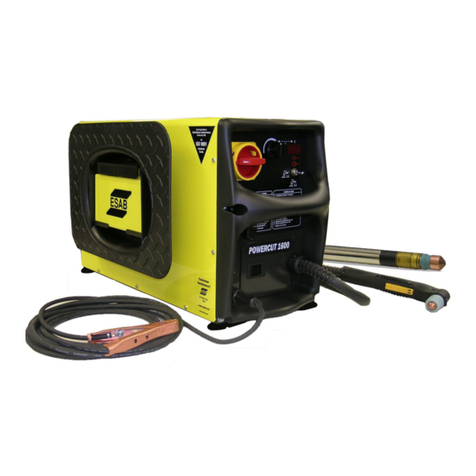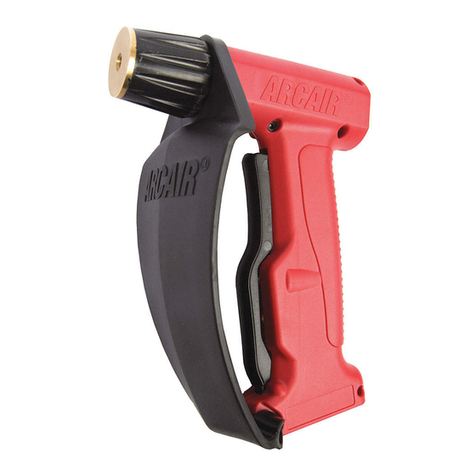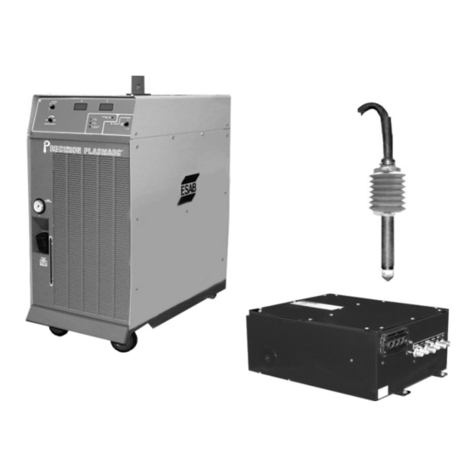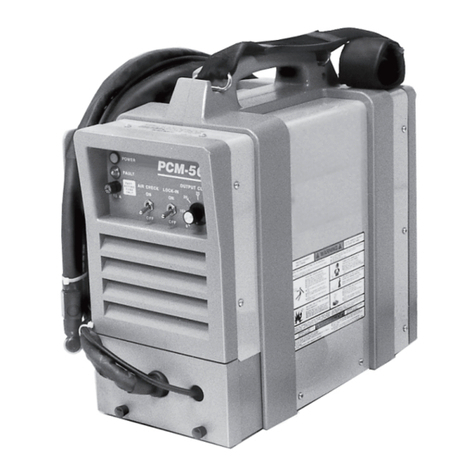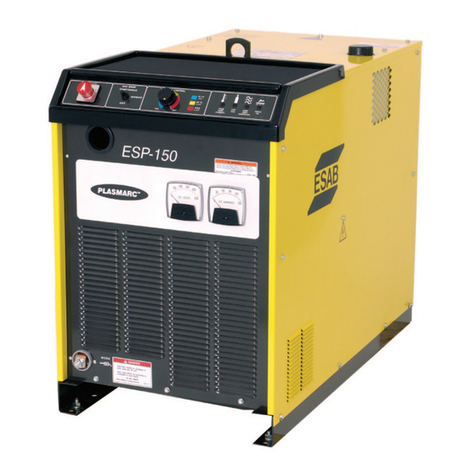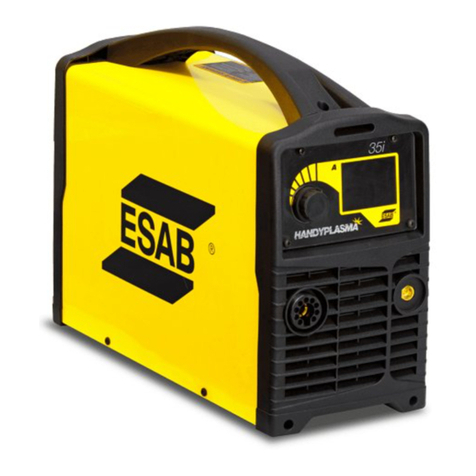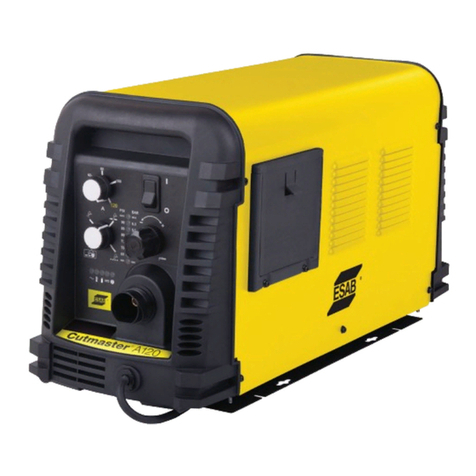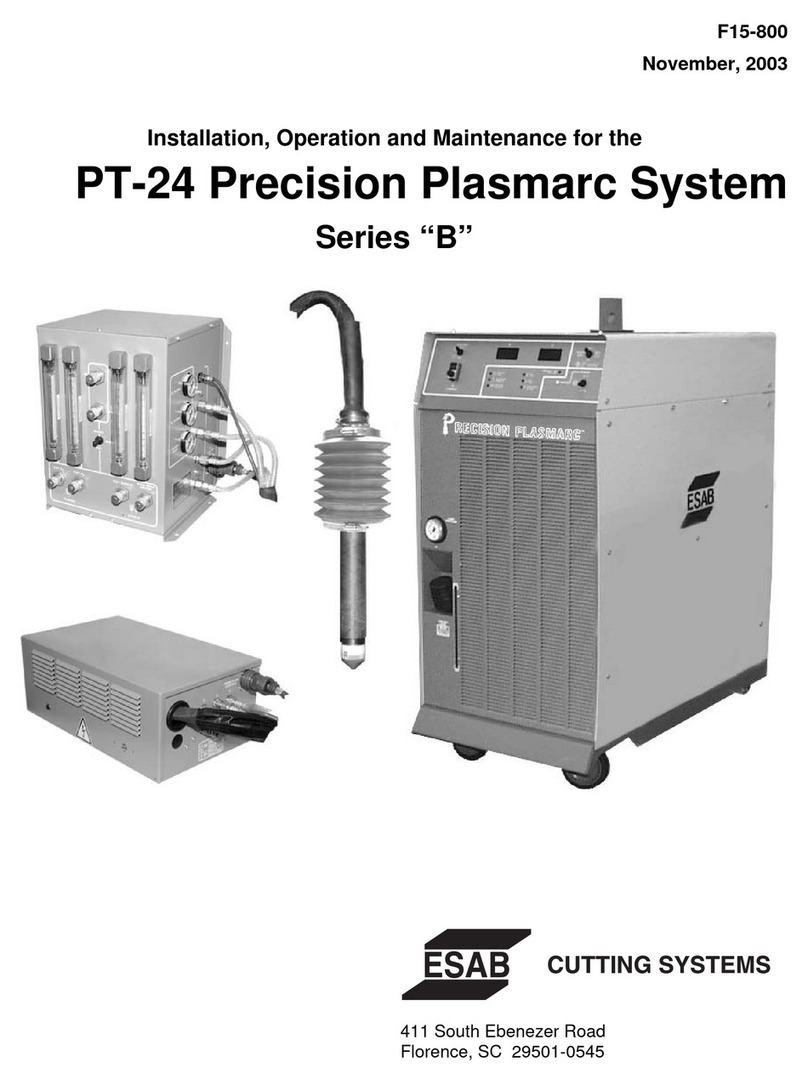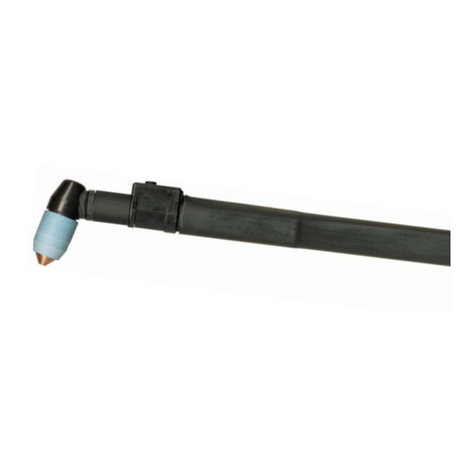
7
ADVERTENCIA:Estas Precauciones de Seguridad
son para su protección. Ellas hacen resumen de
información proveniente de las referencias listadas
en la sección "Información Adicional Sobre La Seguridad". Antes
de hacer cualquier instalación o procedimiento de operación ,
asegúrese de leer y seguir las precauciones de seguridad listadas
a continuación así como también todo manual, hoja de datos de
seguridad del material, calcomanias, etc. El no observar las
Precauciones de Seguridad puede resultar en daño a la persona
o muerte.
PROTEJASE USTED Y A LOS DEMAS--
Algunos procesos de soldadura, corte y
ranurado son ruidosos y requiren protección
para los oídos. El arco, como el sol , emite
rayos ultravioleta (UV) y otras radiaciones que pueden dañar
la piel y los ojos. El metal caliente causa quemaduras. EL
entrenamiento en el uso propio de los equipos y sus procesos
es esencial para prevenir accidentes. Por lo tanto:
1. Utilice gafas de seguridad con protección a los lados siempre
que esté en el área de trabajo, aún cuando esté usando careta
de soldar, protector para su cara u otro tipo de protección.
2. Use una careta que tenga el filtro correcto y lente para proteger
sus ojos, cara, cuello, y oídos de las chispas y rayos del arco
cuando se esté operando y observando las operaciones. Alerte
a todas las personas cercanas de no mirar el arco y no
exponerse a los rayos del arco eléctrico o el metal fundido.
3. Use guantes de cuero a prueba de fuego, camisa pesada de
mangas largas, pantalón de ruedo liso, zapato alto al tobillo, y
careta de soldar con capucha para el pelo, para proteger el
cuerpo de los rayos y chispas calientes provenientes del metal
fundido. En ocaciones un delantal a prueba de fuego es
necesario para protegerse del calor radiado y las chispas.
4. Chispas y partículas de metal caliente puede alojarse en las
mangas enrolladas de la camisa , el ruedo del pantalón o los
bolsillos. Mangas y cuellos deberán mantenerse abotonados,
bolsillos al frente de la camisa deberán ser cerrados o eliminados.
5. Proteja a otras personas de los rayos del arco y chispas
calientes con una cortina adecuada no-flamable como división.
6. Use careta protectora además de sus gafas de seguridad
cuando esté removiendo escoria o puliendo. La escoria puede
estar caliente y desprenderse con velocidad. Personas cercanas
deberán usar gafas de seguridad y careta protectora.
FUEGOY EXPLOSIONES--Elcalordelas
flamasyelarco puedenocacionar fuegos.
Escoria caliente y las chispas pueden
causar fuegosyexplosiones.Porlotanto:
1. Remueva todo material combustible lejos del
área de trabajo o cubra los materiales con una cobija a prueba
de fuego. Materiales combustibles incluyen madera, ropa,
líquidos y gases flamables, solventes, pinturas, papel, etc.
2. Chispas y partículas de metal pueden introducirse en las grietas
y agujeros de pisos y paredes causando fuegos escondidos en
otros niveles o espacios. Asegúrese de que toda grieta y
agujero esté cubierto para proteger lugares adyacentes contra
fuegos.
3. No corte, suelde o haga cualquier otro trabajo relacionado hasta
que la pieza de trabajo esté totalmente limpia y libre de substancias
que puedan producir gases inflamables o vapores tóxicos. No
trabaje dentro o fuera de contenedores o tanques cerrados.
Estos pueden explotar si contienen vapores inflamables.
4. Tenga siempre a la mano equipo extintor de fuego para uso
instantáneo, como por ejemplo una manguera con agua, cubeta
con agua, cubeta con arena, o extintor portátil. Asegúrese que
usted esta entrenado para su uso.
5. No use el equipo fuera de su rango de operación. Por ejemplo,
el calor causado por cable sobrecarga en los cables de soldar
pueden ocasionar un fuego.
6. Después de termirar la operación del equipo, inspeccione el área
de trabajo para cerciorarse de que las chispas o metal caliente
ocasionen un fuego más tarde. Tenga personal asignado para
vigilar si es necesario.
7. Para información adicional , haga referencia a la publicación
NFPA Standard 51B, "Fire Prevention in Use of Cutting and
Welding Processes", disponible a través de la National Fire
Protection Association, Batterymarch Park, Quincy, MA 02269.
CHOQUE ELECTRICO -- El contacto con las partes
eléctricas energizadas y tierra puede causar
daño severo o muerte. NO use soldadura de
corriente alterna (AC) en áreas húmedas, de
movimiento confinado en lugares estrechos
o si hay posibilidad de caer al suelo.
1. Asegúrese de que el chasis de la
fuente de poder esté conectado a tierra através del sistema de
electricidad primario.
2. Conecte la pieza de trabajo a un buen sistema de tierra física.
3. Conecte el cable de retorno a la pieza de trabajo. Cables y
conductores expuestos o con malas conexiones pueden
exponer al operador u otras personas a un choque eléctrico
fatal.
4. Use el equipo solamente si está en buenas condiciones.
Reemplaze cables rotos, dañados o con conductores
expuestos.
5. Mantenga todo seco, incluyendo su ropa, el área de trabajo, los
cables, antorchas, pinza del electrodo, y la fuente de poder.
6. Asegúrese que todas las partes de su cuerpo están insuladas
de ambos, la pieza de trabajo y tierra.
7. No se pare directamente sobre metal o tierra mientras trabaja
en lugares estrechos o áreas húmedas; trabaje sobre un
pedazo de madera seco o una plataforma insulada y use
zapatos con suela de goma.
8. Use guantes secos y sin agujeros antes de energizar el equipo.
9. Apage el equipo antes de quitarse sus guantes.
10. Use como referencia la publicación ANSI/ASC Standard Z49.1
(listado en la próxima página) para recomendaciones específicas
de como conectar el equipo a tierra. No confunda el cable de
soldar a la pieza de trabajo con el cable a tierra.
CAMPOS ELECTRICOS Y MAGNETICOS -
Son peligrosos. La corriente eléctrica fluye
através de cualquier conductor causando a
nivel local Campos Eléctricos y Magnéticos
(EMF). Las corrientes en el área de corte y
soldadura, crean EMF alrrededor de los
cablesdesoldarylasmaquinas.Por lotanto:
1. Soldadores u Operadores que use marca-pasos
para el corazón deberán consultar a su médico antes de soldar.
El Campo Electromagnético (EMF) puede interferir con algunos
marca-pasos.
2. Exponerse a campos electromagnéticos (EMF) puede causar
otros efectos de salud aún desconocidos.
3. Los soldadores deberán usar los siguientes procedimientos para
minimizar exponerse al EMF:
A. Mantenga el electrodo y el cable a la pieza de trabajo juntos,
hasta llegar a la pieza que usted quiere soldar. Asegúrelos
uno junto al otro con cinta adhesiva cuando sea posible.
B. Nunca envuelva los cables de soldar alrededor de su cuerpo.
C. Nunca ubique su cuerpo entre la antorcha y el cable, a la pieza
de trabajo. Mantega los cables a un sólo lado de su cuerpo.
D. Conecteelcabledetrabajoalapiezadetrabajolomáscercano
posible al área de la soldadura.
E. Mantengalafuentedepoderyloscablesdesoldarlomáslejos
posible de su cuerpo.
PRECAUCION DE SEGURIDAD


